Exhibitions
2016-1 MOMAT Collection
Date
-Location
Collection Gallery, from the fourth to second floors
The collection exhibition from May 24 to August 7, 2016
Welcome to the MOMAT Collection! Here are a few things to keep an eye out for in this edition. First of all, in the “Highlights” section (Room 1, 4th floor), be sure and see Tsuchida Bakusen’s Serving Girl at a Spa (Important Cultural Property) and Kaburaki Kiyokata’s Boating Excursion on the Sumida River, two works that are perfectly suited to the summer. And don’t miss the various other works that eloquently express a wide range of emotions related to the season. For example, when you take a close look at the various devices painters used to depict light (Room 2, 4th floor), and rain and atmosphere (Room 10, 3rd floor), you are sure to feel an even deeper attraction to these works.
Last year the museum acquired 11 works by the oil painter Matsumoto Shunsuke, who was active during and after World War II. These new acquisitions are on view along with a number of Matsumoto’s paintings that were already part of the collection in Room 6 (3rd floor) and Gallery 4 (2nd floor).
In Gallery 4, we also present a small exhibit called Modern Landscapes – For the Pleasure of People and Scenery: Nara Yoshimoto Curates the MOMAT Collection. When seen through the eyes of noted artist Nara Yoshitomo, the works in this display promise to take on a new allure.
Finally, in conjunction with The Voice Between: The Art and Poetry of Yoshimasu Gozo exhibition, which will be held from June 7 to August 7 on the first floor, we present a selection of works by Wakabayashi Isamu, a close friend of Gozo’s, in Room 12 (2nd floor). This edition of the collection exhibit is once again filled with a great diversity of works. Please enjoy looking at them.
Important Cultural Properties on display
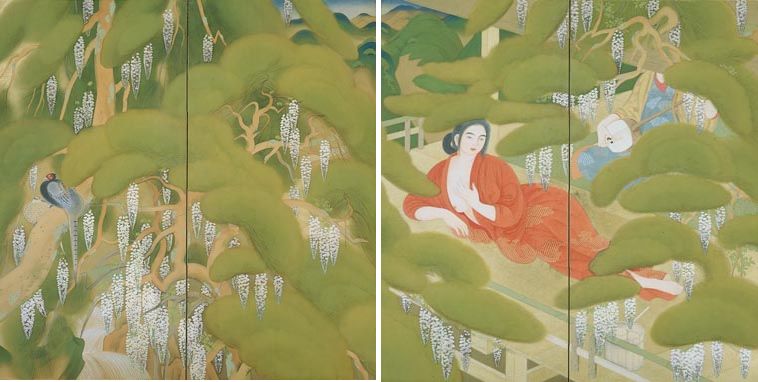
The National Museum of Modern Art, Tokyo Collection (main building) contains 14 items that have been designated by the Japanese government as Important Cultural Properties. These include nine Nihon-ga (Japanese-style) paintings, four oil paintings, and one sculpture. (One of the Nihon-ga paintings and one of the oil paintings are on long-term loan to the museum.)
The following Important Cultural Properties are shown in this period:
- Yorozu Tetsugoro, Nude Beauty, 1912
- Kishida Ryusei, Road Cut through a Hill, 1915
- Tsuchida Bakusen, Serving Girl in a Spa, 1918
- Nakamura Tsune, Portrait of Vasilii Yaroshenko , 1920
- Please visit the Important Cultural Property section Masterpieces for more information about the pieces.
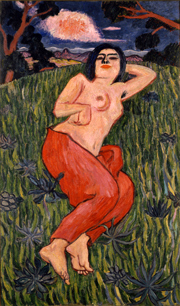
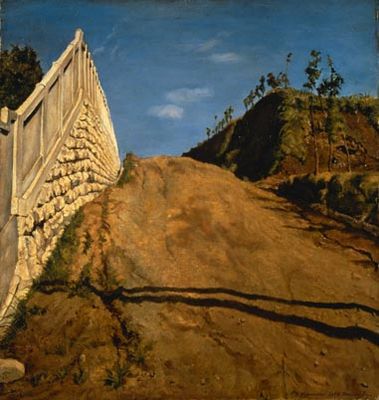
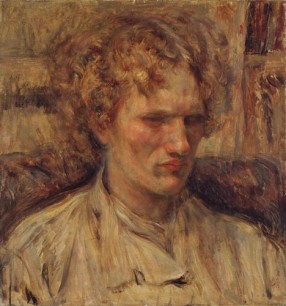
About the Sections
MOMAT Collection comprises twelve(or thirteen)rooms and two spaces for relaxation on three floors. In addition, sculptures are shown near the terrace on the second floor and in the front yard. The light blue areas in the cross section above make up MOMAT Collection. The space for relaxation A Room With a View is on the fourth floor.
The entrance of the collection exhibition MOMAT Collection is on the fourth floor. Please take the elevator or walk up stairs to the fourth floor from the entrance hall on the first floor.
4F (Fourth floor)
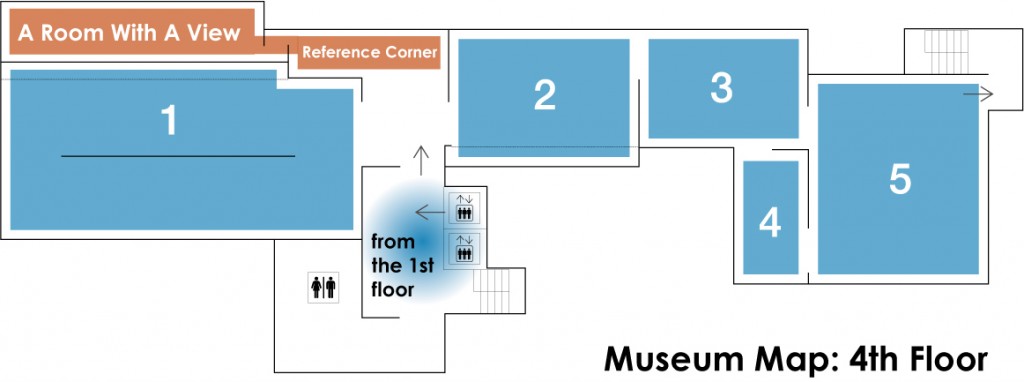
Room 1 Highlights * This section presents a consolidation of splendid works from the collection, with a focus on Master Pieces.
Room 2– 5 1900s-1940s
From the End of the Meiji Period to the Beginning of the Showa Period
A Room With A View
Reference Corner
Room 1 Highlights
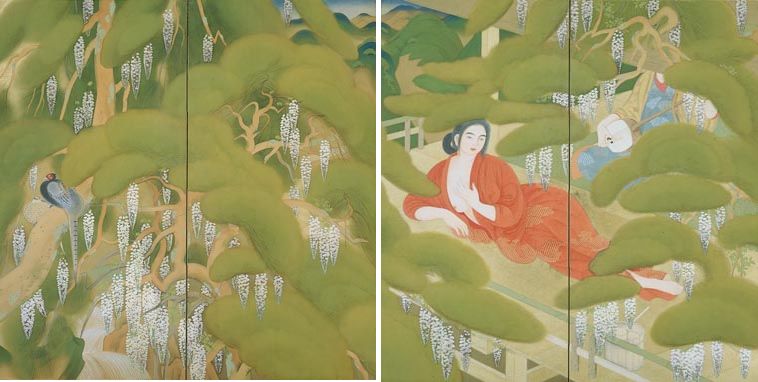
Over 200 works are lined up in this 3,000-square-meter space – these extravagant conditions are the selling point of the MOMAT Collection. But in recent years, we have received an increasing number of comments like, “They’re so many things here, I’m not sure what to see!” and “All I want to do is have a quick look at the famous works in a short period of time!” Thus, in conjunction with the gallery renovation in 2012, we have created this “Highlights” corner to allow visitors to enjoy a consolidation of splendid works from the collection, with a focus on Important Cultural Properties. For the walls, we have selected navy blue to make the works stand out more beautifully. And to eliminate the glare of glass cases, we have opted for a mat black for the floor to help viewers concentrate on the displays.
We begin this edition with two screens that are perfect for early to midsummer: Kaburaki Kiyokata’s Boating Excursion on the Sumida River depicts a lively pleasure-boat trip, and Tsuchida Bakusen’s Serving Girl in a Spa expresses the vitality of human life as it competes with that of plants. The oil painting section includes foreign artists such as Paul Cézanne and Georges Braque, both of whom exerted an enormous influence on 20th century art. These paintings are followed by Important Cultural Properties by Yorozu Tetsugoro and Kishida Ryusei, and in the postwar category, works by Kusama Yayoi, Tanaka Atsuko, Tatsuno Toeko, and Nara Yoshitomo.
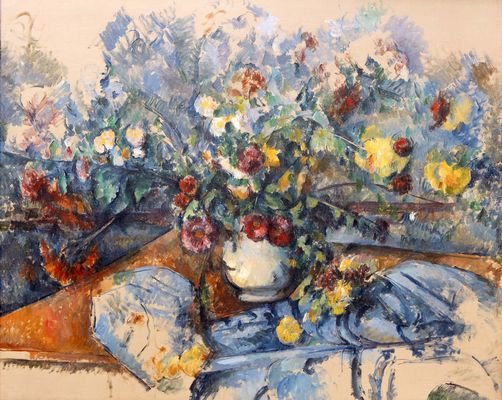
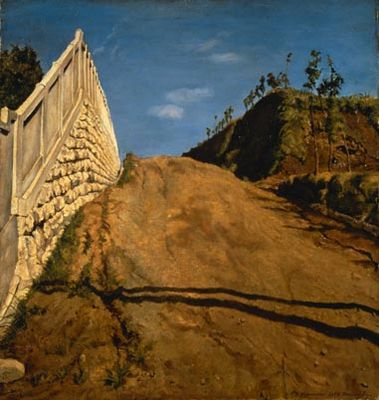
Room 2 Brilliant Light
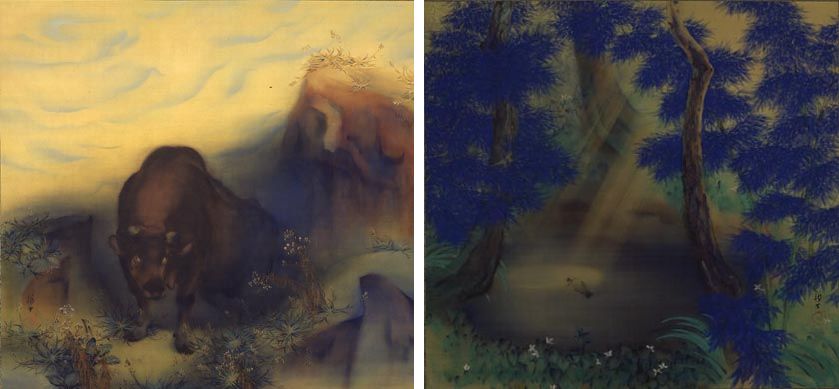
ⒸMinami Kawabata & Ryuta Kawabata 2016/JAA1600076
Summer is finally upon us. In this brilliant season, the mountains, rivers, and seas are bathed in sunlight. Artists of the Meiji and Taisho Period frequently depicted these types of landscapes that conveyed the summer light.
The woman in Nakazawa Hiromitsu’s Summer is shown under the shining sun. It would actually be difficult to sketch this kind of scene due to the backlight. Nakazawa, however, splendidly consolidates the women’s form, exuding a cool sensation with the underlying blue color.
While Kawabata Ryushi depicts living things bathed in peaceful light in his Nihon-ga (Japanese-style painting), Tokuoka Shinsen focuses on a lotus glistening in the mist of an early morning rain. In Tobari Kogan’s Woman Gazing at the Surface of the Water, the protagonist seems to be staring at the reflection of her own face. As you look at these works, try to imagine how each artist dealt with the light as they created the landscape.
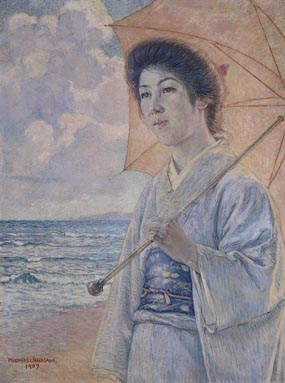
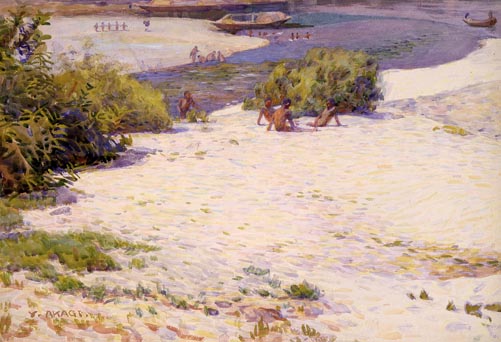
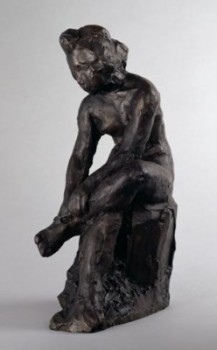
Room 3 Love and Cream Buns
Established in 1901, the bakery Shinjuku Nakamuraya is still headquartered in the Shinjuku district of Tokyo. Its founders, Soma Aizo and his wife Kokko, loved the arts and many young artists gathered at the bakery. These included sculptors such as Ogiwara Morie, Nakahara Teijiro, and Tobari Kogan, and painters such as Nakamura Tsune and Yanagi Keisuke. Perfectly conveying the freedom of the period, associated with so-called “Taisho democracy,” Nakamuraya was one of the era’s most important art salons.
The art salon concept originated in Europe, and its most significant feature was an attractive proprietress who discovered talented people. At Nakamuraya, Soma Kokko fulfilled this role. Ogiwara Morie was in love with Kokko and his work Woman is said to be based on her appearance. For his part, Nakamura Tsune fell first for Kokko and then later for the Somas’ oldest daughter, Toshiko. In both cases, however, his love went unrequited. As these examples suggest, in art salons during the Taisho democracy era, love was an important source of nourishment for art. So what about cream buns? In 1904, Nakamuraya became the first shop in Japan to make the baked delicacy.
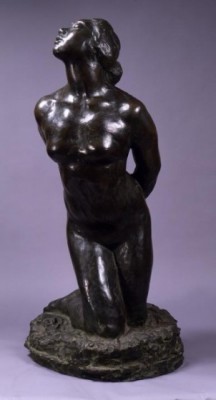
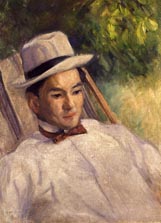
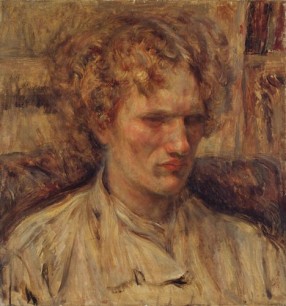
Room 4 Writhing Season
The word “writhing” in the title connotes two things. The first is mental agony. The sculptures on view in this room were made by artists such as Ogiwara Morie, Takamura Kotaro, Tobari Kogan, who were associated with the Nakamuraya Salon introduced in Room 3. Ogiwara, who was in love with Soma Kokko, proprietress of the salon, suddenly died at the age of 31 after completing Woman (on display in Room 3). Priest Mongaku (also on display in Room 3) deals with a Buddhist priest from the Kamakura Period who is said to have entered the priesthood after falling in love with the wife of one of his compatriots.
The title’s second connotation is physical agony – not merely emotional distress, but the violently twisted bodies seen in these works. Until the late 19th century, Japanese sculpture was characterized by figures that stood at attention. Ogiwara, however, introduced a trend of forms twisted in a spiral shape. This was rooted in his fondness for the work of the French sculptor Auguste Rodin. Despite the fact that the figure’s limbs have been omitted from the work, Rodin’s Torso conveys the twisted state of an entire body using only a torso.
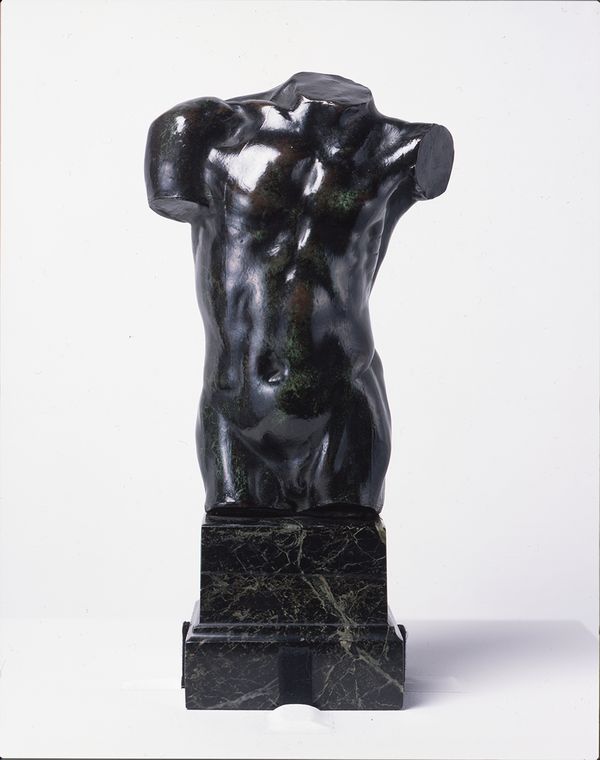
(Photograph:Otani Ichiro)
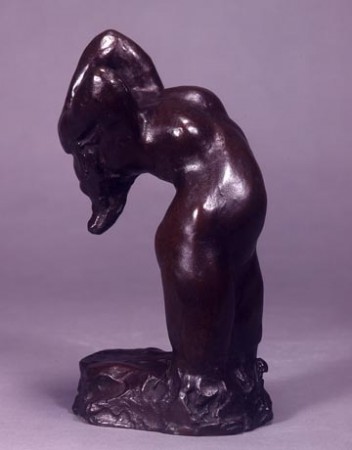
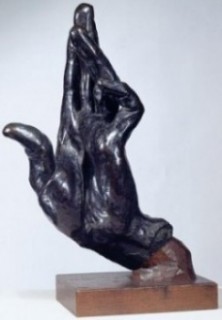
(Photograph:Otani Ichiro)
Room 5 There’s a Reason for Gathering Together
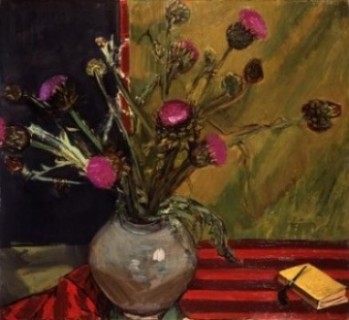
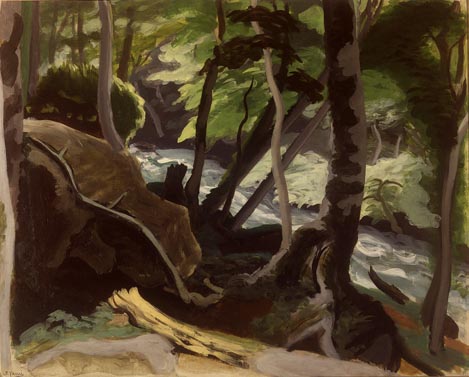
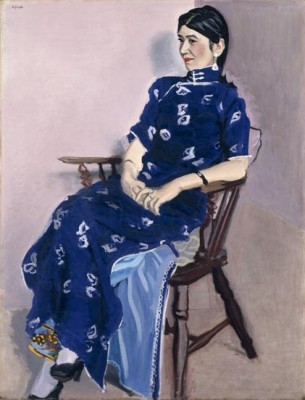
Portrait of Chin-Jung,1934
Fujishima Takeji, Umehara Ryuzaburo, Yasui Sotaro, Ihara Usaburo, and Ito Ren: The works you see here are by some of the most prominent artists of the 1940s. Yasui and Umehara, for example, are so well known that they inspired the term “Yasui / Umehara era.” Ihara served as a judge in the Teiten (Imperial Academy of Art Exhibition) in 1935, and Fujishima was awarded the first Order of Culture in 1937. Ito was recognized for his work with a prize at the Nika-ten exhibition in 1930 among other honors.
These artists took part in an event titled the “Works by Exceptional Children Roundtable Discussion,” held in 1939, a transcript of which was published the following year in the art magazine Mizue. The “exceptional child” under discussion was Yamashita Kiyoshi (1922–71), who is still known by the epithet, “the Wandering Artist.” Based on the fact that the five artists are joined by the Nihon-ga painter Kawabata Ryushi, the art critic Araki Sueo, the philosopher Tanigawa Tetsuzo, the psychologist Togawa Yukio, and Mizue’s editor-in-chief Oshita Masao, it is clear that Yamashita’s emergence in the art world was seen as an important event.
3F (Third floor)
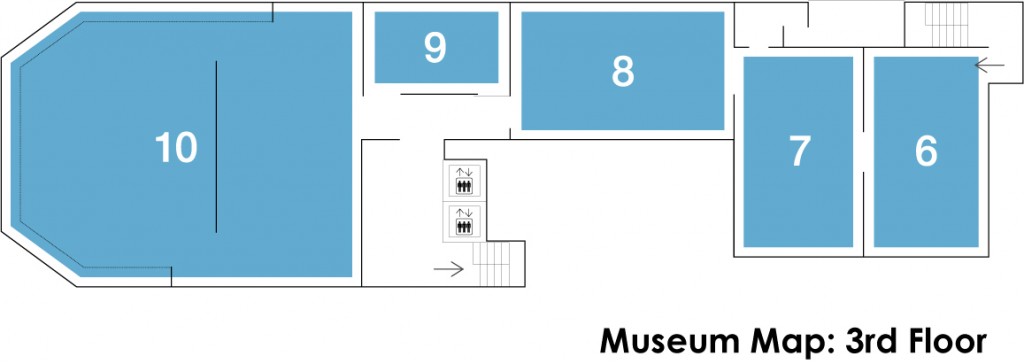
Room 6-8 1940s-1960s
From the End of the Meiji Period to the Beginning of the Showa Period
Room 9 Photography and Video
Room 10 Nihon-ga (Japanese-style Painting)
Room to Consider the Building
Room 6 Matsumoto Shunsuke: During and After the War
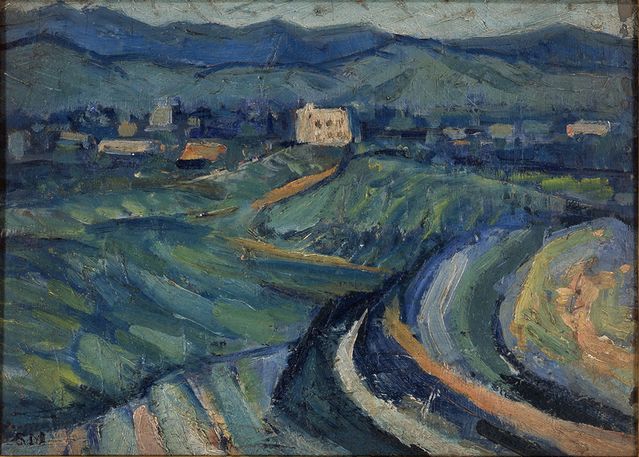
The Town of Sanno,1933
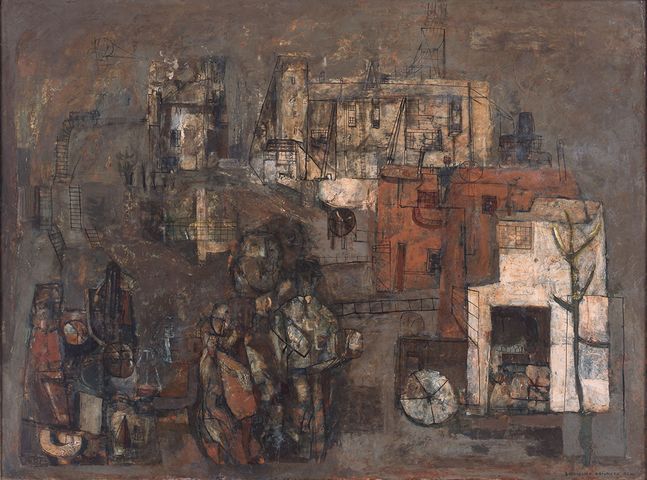
Scene near N Station ,1940
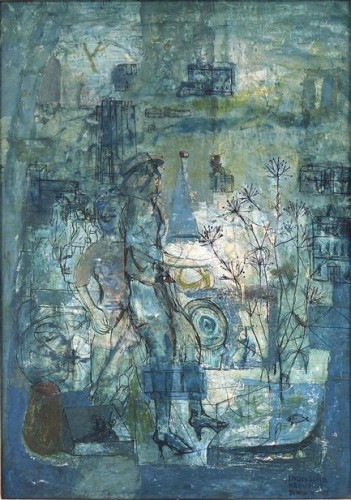
Black Flowers ,1940
Last year the museum acquired a group of 11 works (six oil paintings and five drawings) by Matsumoto Shunsuke. Combined with other works by Matsumoto that were already part of the collection, the museum now includes a total of 22 items, ranging from an early painting titled The Town of Sanno (1933) to the artist’s last work, Building (Brown) (1948), allowing viewers to trace the development of Matsumoto’s career. In this exhibit, we present all 22 of the works in this room and Gallery 4 (2nd floor) alongside Modern Landscapes – For the Pleasure of People and Scenery: Nara Yoshimoto Curates the MOMAT Collection.
Two of the new acquisitions, Scene near N Station and Black Flowers, were first shown in the avant-garde art group Kyushitsu-kai’s second exhibition in 1940, and are distinguished by the use of a montage technique combining a town and people. However, it was not new techniques that concerned Matsumoto so much the existence of the individual, whose existence was threatened by the masses of people in the city. Unlike the era’s war paintings, which were created for the nation and the masses, Matsumoto focused on the irreplaceable individual. This attitude is also consistently evident in the artist’s postwar artistic experiments.
Room 7 Ebihara Kinosuke, Chokai Seiji, and Jean Dubuffet
Born in Kagoshima Prefecture, Ebihara Kinosuke moved to France at the age of 18. After receiving acclaim in Paris, he moved to Kumamoto following the war and energetically devoted himself to art. Here, for the first time in quite a while, we have assembled several of the artist’s most notable works. In addition to Sleeping Sisters, the painting that led to Ebihara’s recognition in Paris, the museum collection includes works such as Skiing Ground, notable for the color of the sky, which inspired the term “Ebihara blue,” and Rainy Day, one of the reasons the artist received the Minister of Education Award for Fine Arts in 1964.
Along with these items, we present some works by Chokai Seiji, who like Ebihara was a member of the Dokuritsu Bijutsu Kyokai (Independent Art Association), and some by Jean Dubuffet, who like Chokai strove to express the ground using the texture of his canvases.
Room 8 Swinging and Swaying
Along with a design movement that attempted to revolutionize daily life, abstract painting, which emerged in Western Europe in the 1920s and ’30s between World War I and II, set out to renew the 20th century’s aesthetic sensibility. Established in Weimar, Germany in 1919, the Bauhaus, a comprehensive educational facility that strove to unify art and technology, counted artists like Wassily Kandinsky and Paul Klee among its teachers.
While referencing music and plant growth, the artists’ abstract paintings are distinguished by dynamic structures made up of colors and forms. In light of the fact that Alexander Calder’s kinetic sculptures, which he called “mobiles,” emerged during the same period, it is clear that movement in art was believed to contain new potential to create dialogue with the viewer and an interactive relationship with the surrounding environment.
Similar work began to flourish all over the world in the 1950s. While absorbing the ideas of Bauhaus and the art of Klee and Calder, Yamaguchi Katsuhiro and Kitadai Shozo, members of the Japanese art group Jikken Kobo (lit., “experimental workshop”), which was formed in 1951, crafted unique and dynamic images through their use of new materials like glass and aluminum.
Room 9 Windows and Photography
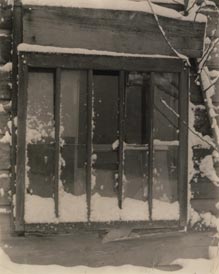
A window is an opening installed in the wall or roof of a building to provide lighting or
ventilation. As it is a familiar part of our lives, the word is used in a variety of metaphors and idioms such as “window on the world,” “the eyes are the windows of the soul,” “out the window,” and “window of time.” What sort of part do windows play in photography?
Windows, passages for light and vision, are highly compatible subjects for photography, a visual medium based on the apprehension of light, as is clear from the 20 works in this exhibit. Jaroslav Rössler’s Skylight, for example, simply captures the beauty of light pouring down into a room through a skylight, but that alone is deeply attractive. Meanwhile, Yasui Nakaji and Ohtsuji Kiyoji’s works, which provide us with a glimpse of something from a window, convey the fact that in its role as an opening that connects the inside and outside of a building, a window functions like a stage set producing dramatic effects.
Incidentally, the word “camera” is derived from the Latin word for “room.” Thus, the lens, which allows light inside a camera, is akin to a window. With this in mind, it makes perfect sense that windows are important motifs in photography.
Room 10 Season of Fragrant Breezes
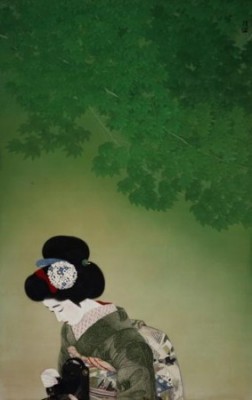
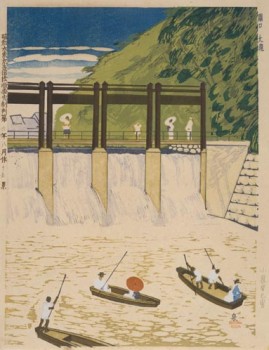
In selecting works with a seasonal theme for the first time in quite a while, we have assembled a group of works, which, by virtue of the fact that they are Nihon-ga (Japanese-style painting), are perfectly suited to summer. The title of this section is “Season of Fragrant Breezes.”
As one Japanese idiom would have it, May is a month of fresh breezes. But in referring back to Japanese literature, fragrant breezes have not always been associated with May. This is also clear, for example, from a poetic exchange between Emperor Wenzong (809-840) and Liu Gongquan (778-865) that dates to Tang-dynasty China. In this exchange, the term “fragrant breezes” referred to the winds of midsummer. And to return to Japan, the Heian-era poet Fujiwara Yoshitsune (1169-1206) used the term in a waka poem to refer to cherry blossoms in spring (“The day has again come when the cherry blossoms come into view / In my hometown, the flowers are illuminated by the moon through the trees / As fragrant breezes carry their fragrance through the trees”), and also in one about summer oranges (“The wind carries the fragrance of oranges to the eaves / As the years pass, oranges and hare’s-foot ferns always arrive together / Calling up images of the past.”). How about haiku? Masaoka Shiki’s poem, “Fragrant winds and pine shadows on naked forms,” is set on the island of shima in Ehime Prefecture, and the distinct shadows cast on naked men are so dazzling that they fit in perfectly with the fragrant breezes of early summer.
How do Nihon-ga painters depict the radiant period from early to midsummer?

ⒸMinami Kawabata & Ryuta Kawabata 2016/JAA1600076
2F (Second floor)
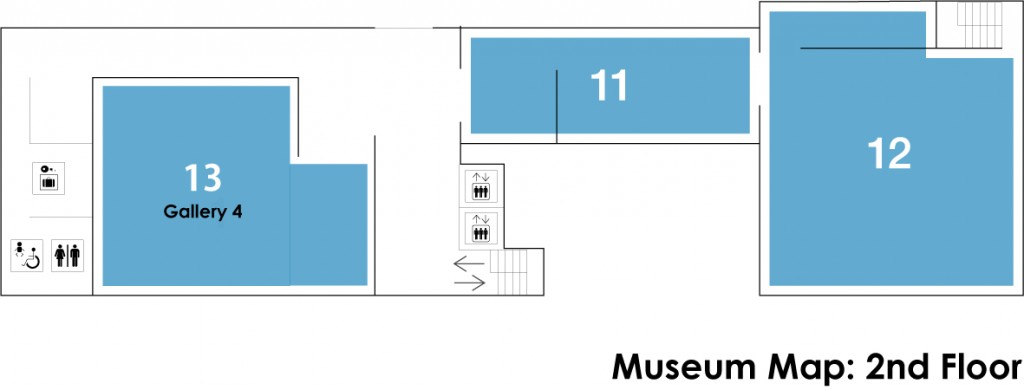
Room 11-12 1970s-2010s
From the End of the Showa Period to the Present
Gallery 4
* A space of about 250 square meters. This gallery offers cutting-edge thematic exhibitions from the Museum Collection, and special exhibitions featuring photographs or design.
May 24-November 13, 2016 (except August 8-August 15, 2016)
Room 11 Signs of Life
Photography is an ideal medium for exploring and documenting everyday scenes that do not contain a particularly beautiful view or notable event. This is because our environment is our reality and the things that we come into contact with on a daily basis are the elements that make up the world we live in. This viewpoint gradually emerged as a distinct movement after the initial search for new photographic visions had ended.
In this section, we present work by four contemporary photographers: Robert Adams, a pioneer in this type of photography; Thomas Struth, a German artist who meticulously documents city streets; and Seino Yoshiko and Katsumata Kunihiko, who are approaching the Japanese landscape with their own methodologies in the 2000s.
The title of this special exhibit is derived from the title of a photo book by Seino in which the photographer subtly responded with a unique sensibility to scenes that most of us would have overlooked, and attempted to discover signs of life in those places.
Room 12 Challenging Iron
Iron, which exists in abundance in the natural world, has not only provided a foundation for human civilization, but is also indispensable in sustaining human life as a component in our blood. Despite its prevalence in every aspect of our lives, however, iron’s history as an art material is relatively short. The earliest use of iron can be traced to the 1920s, when the Spanish artist Julio González (1876-1942) created sculptures by welding together pieces of the metal.
In this room, we present postwar works by Japanese artists who were both attracted to iron and engaged in battle with the material. Wakabayashi Isamu developed fresh sculptural spaces based on his singular imagination, as is evident from the artist’s sketches. Muraoka Saburo, meanwhile, strove to evoke the inherent physiology of iron by melting and cutting iron rods with a length of over ten meters. Tsuchitani Takeshi created open spaces by adding wrinkles and beating thin, light pieces of iron. And last but not least, after pounding lumps of iron with a hammer, Tawa Keizo drew out the metal’s brilliance by making its surface fluid. By coming in contact with various features of the material that we would not normally encounter in daily life, we come to understand the magic of iron, which has the power to drive sculptors mad.
About the Exhibition
- Location
-
Collection Gallery, from the fourth to second floors
- Date
-
May 24, 2016 – August 7, 2016
- Time
-
10:00-17:00 (Friday and Saturday is 10:00-20:00)
*Last admission is 30 minutes before closing. - Closed
-
※Closed on Mondays (except July 18) and July 19
- Admission
-
Adults ¥430 (220)
College and university students ¥130 (70)
*Including the admission fee for MOMAT Collection and Modern Landscapes – For the Pleasure of People and Scenery: Nara Yoshimoto Curates the MOMAT Collection.
*The price in brackets is for the group of 20 persons or more.
*All prices include tax.*Free for high school students, under 18, seniors(65 and over), Campus Members, MOMAT passport holder.
* Show your Membership Card of the MOMAT Supporters or the MOMAT Members to get free admission (a MOMAT Members Card admits two persons free).
*Persons with disability and one person accompanying them are admitted free of charge. *Members of the MOMAT Corporate Partners are admitted free with their staff ID. - Free Admission Days
-
Collection Gallery and Gallery 4
Free on June 5, July 3 and August 7, 2016 - Organized by
-
The National Museum of Modern Art, Tokyo


